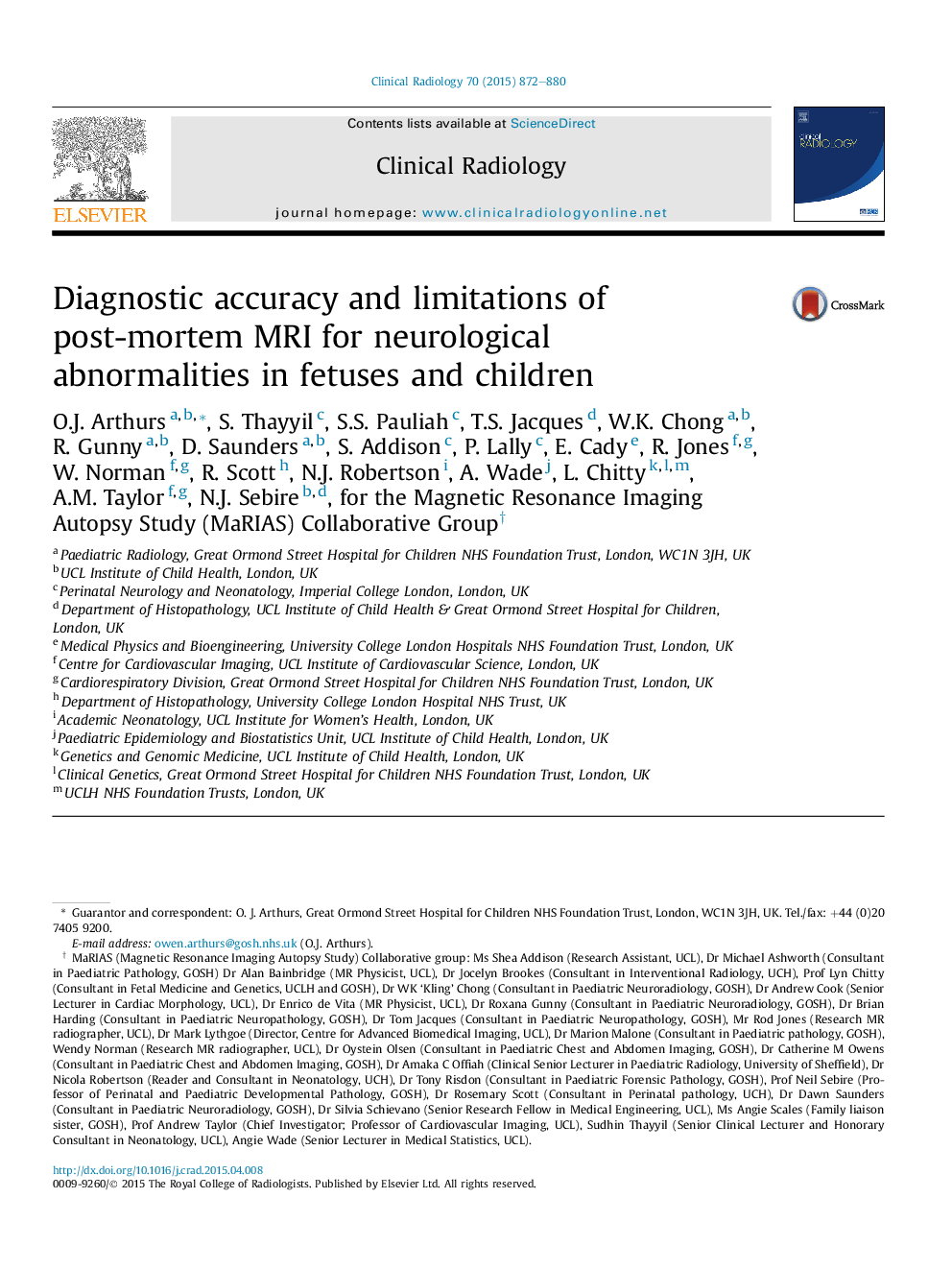| Article ID | Journal | Published Year | Pages | File Type |
|---|---|---|---|---|
| 6190819 | Clinical Radiology | 2015 | 9 Pages |
â¢Post mortem MRI (PMMRI) has a sensitivity of >87% for detecting cerebral malformations, intracranial bleeds and neurological cause of death.â¢PMMRI provides important diagnostic information in >50% of fetuses where conventional brain autopsy is non-diagnostic.â¢PMMRI is currently poor at reliably identifying ischaemic brain injury, especially in fetuses.
AimTo compare the diagnostic accuracy of non-invasive cerebral post-mortem magnetic resonance imaging (PMMRI) specifically for cerebral and neurological abnormalities in a series of fetuses and children, compared to conventional autopsy.Materials and methodsInstitutional ethics approval and parental consent was obtained. Pre-autopsy cerebral PMMRI was performed in a sequential prospective cohort (n = 400) of fetuses (n = 277; 185 â¤Â 24 weeks and 92 > 24 weeks gestation) and children <16 years (n = 123) of age. PMMRI and conventional autopsy findings were reported blinded and independently of each other.ResultsCerebral PMMRI had sensitivities and specificities (95% confidence interval) of 88.4% (75.5 to 94.9), and 95.2% (92.1 to 97.1), respectively, for cerebral malformations; 100% (83.9 to 100), and 99.1% (97.2 to 99.7) for major intracranial bleeds; and 87.5% (80.1 to 92.4) and 74.1% (68 to 79.4) for overall brain pathology. Formal neuropathological examination was non-diagnostic due to maceration/autolysis in 43/277 (16%) fetuses; of these, cerebral PMMRI imaging provided clinically important information in 23 (53%). The sensitivity of PMMRI for detecting significant ante-mortem ischaemic injury was only 68% (48.4 to 82.8) overall.ConclusionsPMMRI is an accurate investigational technique for identifying significant neuropathology in fetuses and children, and may provide important information even in cases where autolysis prevents formal neuropathological examination; however, PMMRI is less sensitive at detecting hypoxic-ischaemic brain injury, and may not detect rarer disorders not encountered in this study.
